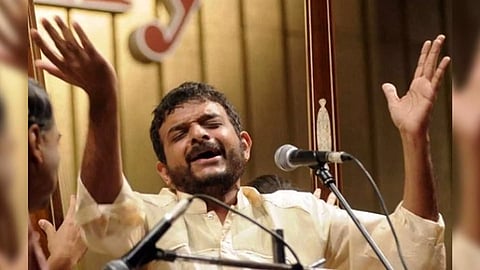

Following the Music Academy Madras’s decision to bestow its Sangita Kalanidhi Award to vocalist TM Krishna this year, a Pandora’s Box was unleashed on rasikas in the carnatic capital. A handful of musicians chose to boycott the MAM’s annual conference this year, while its President reiterated that the Academy will stand by its decision. The developments have spurred a vicious cycle of digging up dirt, not just on the stakeholders, but on anyone with a viewpoint on this incident.
Before taking a stand, let’s digress and examine a phenomenon that died out in Kerala over three decades ago. For music and film buffs who had their ears to the ground, the late 80’s and early 90s represented a musical renaissance in mainstream Malayalam films. Late director Lenin Rajendran, an active member of the Communist party, no less, had helmed a period film called Swathi Thirunal (1987) a biopic of the Maharaja of Travancore. The film boasted of many carnatic songs and earned the late M Balamuralikrishna, a well-deserved State award.
The film opened the floodgates to a slew of films, riding not just the wave of high wattage superstars, but grounded in a specific musical sensibility — that of mainstream carnatic, Carnatic-core if you may. Spearheading this new wave was superstar Mohanlal who delivered not one, but three back to back carnatic-centric hits over a period of three years: His Highness Abdullah (1990), Bharatham (1991) and Kamaladalam (1992). In a prescient bit of screenwriting, Abdullah features Mohanlal playing a conman, a Muslim qawwali singer from Bombay, who upon the insistence of the devious kin of a royal family, takes on the guise of a Brahmin carnatic singer, to win the admiration of the Thampuran with his peerless musical faculties, and to eventually eliminate him.
The three films turned out to be blockbusters, acclaimed by critics and audiences. It transformed the crooners next-door into full-fledged rasikas in their own right, with fans attempting to render the songs, while paying heed to the concepts of raagam, thaanam, and pallavi. Interestingly, the music of the three films was composed by a contemporary of KJ Yesudas — Raveendran Master, a musical genius whose childhood was steeped in poverty, far removed from anything resembling privilege or nobility.
The wave of democratisation of carnatic music in Malayalam cinema was a short lived affair that burned out before the mid-1990s. The last holdout of that trend was a film called Sargam (1992), which apart from featuring kritis by Muthuswami Dikshitar and Thyagaraja, also had melodious classical songs penned by the late Yusufali Kechery, a recipient of the Kerala Sahitya Academy Award.
Tutored pro bono in Sanskrit for four years by the revered scholar KP Narayana Pisharody, Kechery went on to win a National Award for his lyrics to a Sanskrit song called Geyam Harinaamadheyam, written for the film Mazha (2000).
You could argue that carnatic music and popular music are poles apart, and that even attempting a comparison is besides the point. But, here’s the deal. Our culture is rife with examples of artistes rising above their circumstances — social or otherwise — to carve a niche for themselves, proving time and again that bastions are meant to be broken. Look no further than our own MS and Isaignani Ilaiyaraaja. As for a stand, Ekalavya does not lose his thumb. Not on our watch.